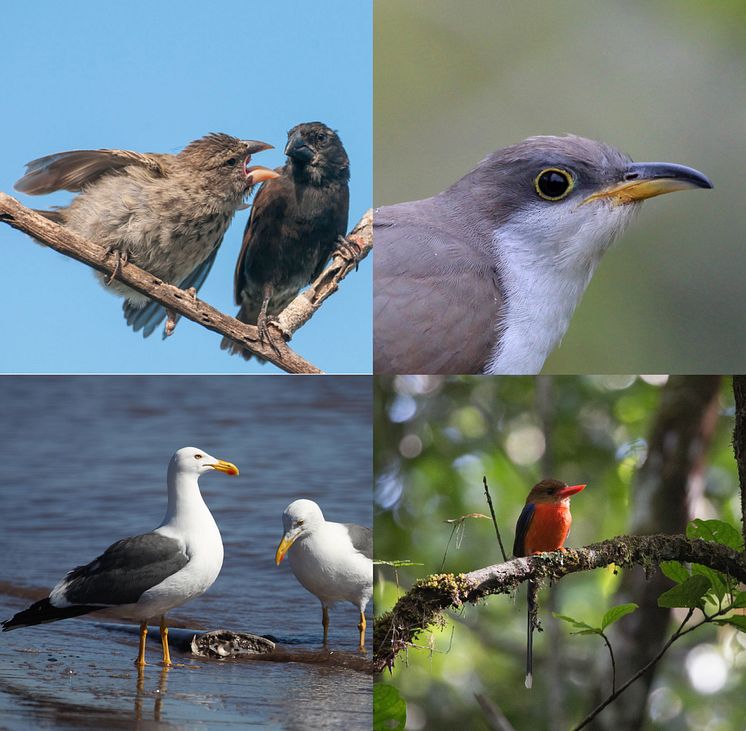
Image -
Beak color variation
Beak color variation in different bird species. Above left, a Medium Ground-Finch fledgling with a yellow lower beak begs for food from its parent. Above right, a Yellow-billed Cuckoo. Below left, a Yellow-footed Gull with a bright yellow beak and legs. Below right, a Brown-headed Paradise Kingfisher with a bright red beak. Carotenoid pigments form the basis for red and yellow color in bird beaks and in Darwin's finch nestlings, a genetic mutation interrupts a key carotenoid processing gene, leading to a bright yellow beak.
Tui de Roy – Roving Tortoise Photos (finch) and Erik D. Enbody.
- License:
- Media Use
The content may be downloaded by journalists, bloggers, columnists, creators of public opinion, etc. It can be used and shared in different media channels to convey, narrate, and comment on your press releases, posts, or information, provided that the content is unmodified. The author or creator shall be attributed to the extent and in the manner required by good practice (this means, for example, that photographers should be attributed).
- By:
- Tui de Roy – Roving Tortoise Photos (finch) and Erik D. Enbody.
- File format:
- .jpg
- Size:
- 2550 x 2500, 1.06 MB